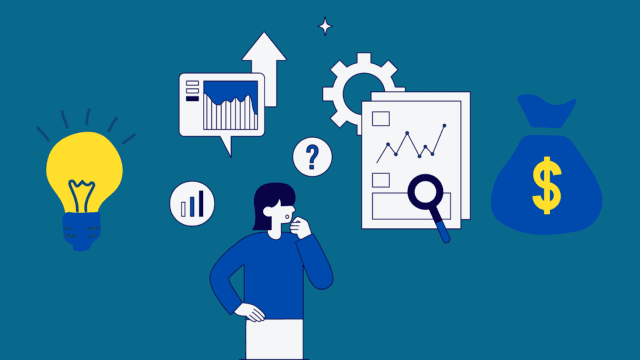Learn about the advantages and disadvantages of a command economy – its impact on resource allocation and prices, how it impacts production decisions, and much more!
A Comprehensive Guide to the Advantages and Disadvantages of a Command Economy
Command economy refers to an economic system where the government or a central authority has control over the allocation of resources, production, and distribution of goods and services.

Meaning and Definition of Command Economy
A command economy is an economic system in which a central authority, usually the government, has significant control over the allocation of resources, production decisions, and distribution of goods and services within a country. In a command economy, the government possesses the power to make key economic decisions and direct the overall functioning of the economy.
In a command economy, the central authority typically sets production targets, determines resource allocation, and regulates prices. The government may own and control major industries, natural resources, and means of production. Additionally, it often implements comprehensive economic plans that outline specific goals and strategies for achieving them.
The primary objective of a command economy is to achieve collective goals and prioritize social welfare over individual economic freedoms. The government exercises authority in economic matters to promote equity, social stability, and public interest. Through its control and influence, the government aims to shape the economy according to its vision and policy objectives.
However, it’s important to recognize that the implementation and extent of command economies can vary significantly. Some countries may have a more centrally planned economic system, where the government has extensive control over all economic activities. While others may adopt elements of a mixed economy, combining command economy principles with market-oriented mechanisms.
Overall, the key characteristic of a command economy is the dominant role of the central authority in making economic decisions. This sets it apart from market-based systems where decisions stand primarily determined by supply and demand dynamics and individual choices.
Characteristics of a command economy
Here are some key characteristics of a command economy:
- Centralized Planning: A command economy relies on centralized planning, where the government determines the production levels, resource allocation, and distribution of goods and services. This planning is typically done through economic plans and targets set by the government.
- State Ownership: In a command economy, the government usually owns and controls major industries, infrastructure, and strategic sectors of the economy. State ownership allows the government to direct economic activity according to its priorities and goals.
- Price Controls: The government sets and controls prices of goods and services in a command economy. Price controls are used to ensure affordability, prevent inflation, and promote equitable distribution of resources. This includes setting price caps, price subsidies, and controlling the pricing of essential goods.
- Allocation of Resources: In a command economy, the government determines how resources such as labor, capital, and raw materials are allocated. Resource allocation is based on the government’s priorities and objectives, rather than on market forces such as supply and demand.
- Limited Role of Market Forces: Market forces, such as competition and consumer demand, play a limited role in a command economy. The government makes decisions based on social and economic goals, rather than relying on market mechanisms to determine production levels and resource allocation.
Additionally features
- Social Welfare Programs: Command economies often prioritize social welfare programs to ensure access to essential services such as healthcare, education, and housing. These programs are funded and managed by the government to provide support for the less privileged members of society.
- Income Redistribution: A command economy typically aims to achieve a more equitable distribution of income and wealth. The government implements policies such as progressive taxation, income redistribution programs, and social benefits to reduce income inequality and ensure a more equitable distribution of resources.
- Long-Term Planning: The government in a command economy engages in long-term planning to set goals and objectives for economic development. This includes investments in infrastructure, research and development, and strategic industries that contribute to the long-term growth and progress of the nation.
It’s important to note that the features and implementation of a command economy can vary depending on the specific context and policies adopted by each country. What are the advantages and disadvantages of command economy?
Advantages of Command Economy:
Here are some key advantages of a command economy:
Centralized direction and planning:
One of the main advantages of a command economy is that the government has significant control and direction over resource allocation, production, and distribution. This centralization enables efficient planning and coordination of economic activities. By having a central authority making decisions regarding what goods and services should be produced. How resources should be allocated, a command economy can prioritize national goals and objectives.
Social welfare and income distribution:
Another advantage of a command economy is the potential for prioritizing social welfare. By actively participating in economic activities, the government can ensure the provision of essential services such as healthcare, education, and housing. This can help reduce inequality by ensuring that basic needs are met and by redistributing wealth and resources. Leading to a more equitable distribution of income and opportunities within society.
Equitable distribution of wealth and resources:
In a command economy, the government can actively intervene in the economy to prevent the excessive accumulation of wealth by a few individuals or corporations. By controlling prices, wages, and profits, a command economy can strive for a more equitable distribution of wealth and resources. This is often achieved through progressive taxation, income redistribution programs, and the provision of social benefits to the less privileged.
Strategic resource allocation:
In times of crisis or national emergencies, a command economy can demonstrate an advantage by quickly mobilizing resources and directing them toward specific sectors or industries. By having centralized decision-making power, the government can ensure a more coordinated response to challenges such as natural disasters or economic recessions. This allows for a more effective allocation of resources to address critical needs and prioritize the nation’s interests.
Long-term planning and investment:
With centralized decision-making, a command economy can engage in long-term planning. By setting national goals and objectives, the government can invest in crucial infrastructure projects, research and development, and other initiatives. That may not yield immediate returns but contribute to the long-term development and progress of the nation. This can help foster sustainable growth and create a foundation for economic prosperity in the future.
Disadvantages of Command Economy:
Here are some key disadvantages of a command economy:
Limited individual freedom and choice:
One of the significant disadvantages of a command economy is the limitation it places on individual freedoms and choices. With the government exercising significant control over economic activities, individuals may have restricted autonomy when it comes to making economic decisions. This can stifle entrepreneurial spirit, personal initiative, and creativity. As individuals have less flexibility to pursue their economic interests and ventures.
Lack of market efficiency and innovation:
Centralized planning often struggles to match the efficiency and innovation that market forces bring about in resource allocation. In a command economy, the absence of market competition and price signals can result in inefficiencies and suboptimal outcomes. Without the spur of competition, businesses may lack the motivation to improve productivity, quality, or innovation. As their success does not solely determined by consumer demand and market forces.
Limited consumer satisfaction and choice:
In a command economy, production decisions does typically not solely driven by consumer demand. As a result, there may be a disconnect between the goods and services produced and the preferences and needs of the population. This can lead to limited choices for consumers. As the availability of specific products and services may not adequately reflect consumer demand. Additionally, a command economy can also experience shortages or surpluses of goods and services due to the lack of market-based mechanisms for adjusting production levels.
Bureaucratic inefficiencies and corruption:
Command economies often require a large and complex bureaucracy to implement economic policies and regulations. This bureaucracy can be prone to inefficiencies, corruption, and slow decision-making processes. The lack of market feedback and competition means that there is less pressure for efficiency and innovation within the bureaucracy. This can hinder effective economic management. Decisions are often subject to bureaucratic red tape, leading to delays, inefficiencies, and the potential for corruption.
Potential for misallocation of resources:
Without the market mechanism of price signals and supply-demand dynamics. There is a risk of misallocation of resources in a command economy. Centralized planning may not accurately assess the true value or importance of goods, services, and investment opportunities. This can lead to the misallocation of resources as decisions are made based on factors. Other than the actual market demand and supply conditions. Over time, this can result in inefficiencies, wasted resources, and an economy that does not fully optimize its productive capacity.
It is important to note that these advantages and disadvantages are generalizations, and the actual performance and outcomes of a command economy can vary based on specific contexts, policies, and the implementation method chosen. Government intervention and control can be both a strength and a weakness depending on how effectively it manages and aligns with the needs and aspirations of the society it serves.
Bottom line
A command economy is an economic system where the government has control over resource allocation, production, and distribution. It involves centralized planning, state ownership, price controls, and the limited role of market forces. Command economies prioritize social welfare, income redistribution, and long-term planning. Explain the advantages and disadvantages of command economy.
The advantages of a command economy include centralized direction, social welfare, equitable distribution of wealth, strategic resource allocation, and long-term planning. Disadvantages include limited individual freedom, lack of market efficiency and innovation, limited consumer satisfaction and choice, bureaucratic inefficiencies and corruption, and potential misallocation of resources. The performance and outcomes of a command economy can vary depending on specific contexts and policies.














